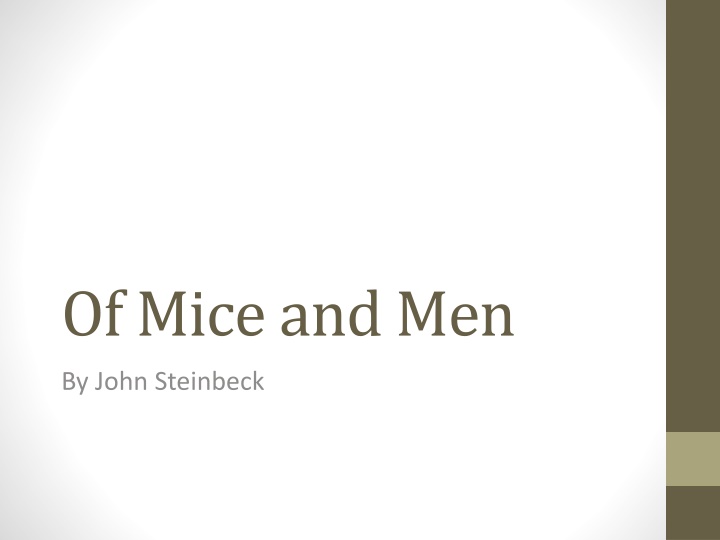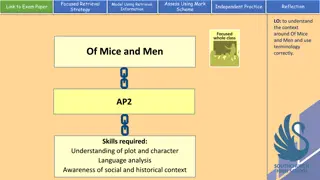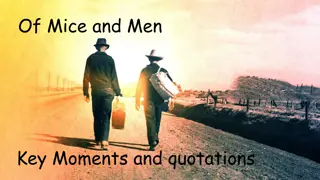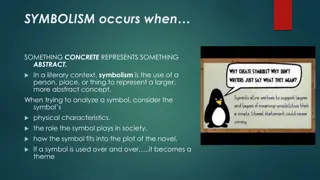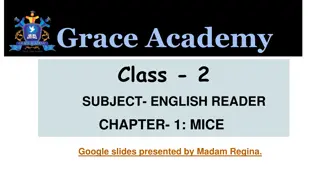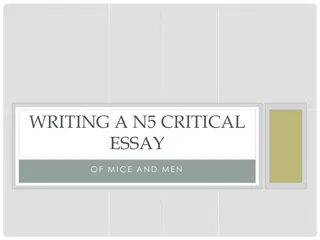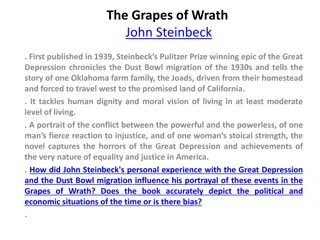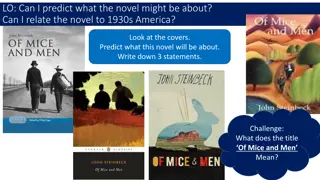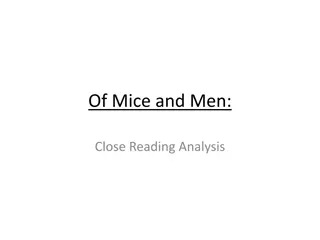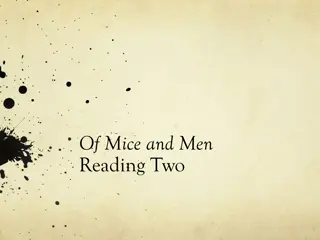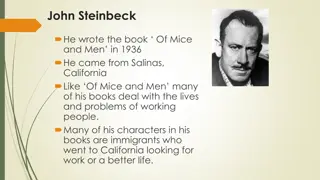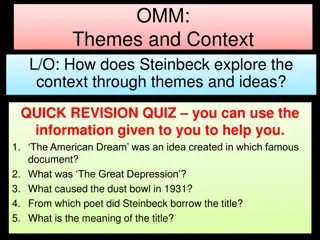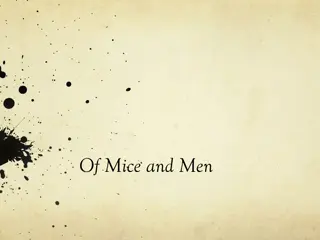Insights into John Steinbeck and "Of Mice and Men
Explore the life and work of John Steinbeck, a prominent American author known for his impactful novels like "Of Mice and Men." Delve into the themes of his writing, controversial content in his books, and his views on society.
Uploaded on Sep 27, 2024 | 2 Views
Download Presentation

Please find below an Image/Link to download the presentation.
The content on the website is provided AS IS for your information and personal use only. It may not be sold, licensed, or shared on other websites without obtaining consent from the author.If you encounter any issues during the download, it is possible that the publisher has removed the file from their server.
You are allowed to download the files provided on this website for personal or commercial use, subject to the condition that they are used lawfully. All files are the property of their respective owners.
The content on the website is provided AS IS for your information and personal use only. It may not be sold, licensed, or shared on other websites without obtaining consent from the author.
E N D
Presentation Transcript
Of Mice and Men By John Steinbeck
John Steinbeck (1902-1968) Won Pulitzer Prize for Grapes of Wrath (1939), East of Eden (1952), and Of Mice and Men (1937). Born in Salinas, California Destination point for dust bowl migration Received the Nobel Peace Prize in 1962
John Steinbeck (Cont.) Was a voice for the poor and downtrodden Anti-Capitalism views Association with labor unions and leftist groups influenced his writing and eventually lead to people believing in his association with the communist party. Socialism never took root in America because the poor see themselves not as an exploited proletariat but as temporarily embarrassed millionaires.
Of Mice and Men (1937) According to the American Library Association Steinbeck was one of the ten most frequently banned authors from 1990 to 2004, with Of Mice and Men ranking sixth out of 100 such books in the United States. For too long the language of books was different from the language of men. To the men I write about profanity is adornment and ornament and is never vulgar and I try to write it so. Of Mice and Men in particular contains euthanasia, racial slurs, anti- business themes, and contains offensive language. Titled after Robert Burns poem titled To a Mouse, The best laid schemes of mice and men often go awry
The Phalanx The literal meaning of the word Phalanx is a body of troops or officers that are moving in close unison. Steinbeck argued that groups with intent, drive, and greater goals are far superior to individuals and weaker groups that simply make it up. Such groups tend to create far greater discipline among its members they tend to get desired results. His ideal group formation is one in which members act as individuals but also contribute creatively to a harmonious whole
Our Themes You will be tracking themes through your dialogue journals as you move through each section of the book. Gender stereotypes/norms Racial Discrimination Group Mentality vs. individuals phalanx theory Loneliness and isolation My Brother s Keeper A Dream Deferred
In every bit of honest writing in the world there is a base theme. Try to understand men, if you understand each other you will be kind to each other. Knowing a man well never leads to hate and nearly always leads to love. There are shorter means, many of them. There is writing promoting social change, writing punishing injustice, writing in celebration of heroism, but always that base theme. Try to understand each other. -John Steinbeck, 1938
